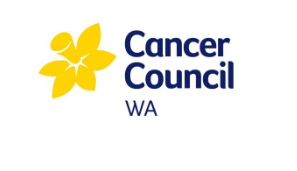The recipes below relate to the Cancer Screening Plan Do Study Act activity. This is a collaborative project between Cancer Council WA and the WA Primary Health Alliance.
If your practice would like to participate in this quality improvement activity please email the Cancer Council GP Education project GP@cancerwa.asn.au or contact your WAPHA Primary Health Liaison or the
Practice Assist Help Desk 1800 2 ASSIST
- Find patients eligible for cervical screening
- Find patients who do not have an FOBT recorded
- Find patients who have not had a mammogram recorded
Cancer in Australia
Cancer is the leading cause of disease burden in Australia 1. Along with cardiovascular disease, it is Australia’s leading underlying cause of death; in 2014, cancer accounted for about 3 of every 10 deaths registered 2. Cancer has a substantial impact on the social and economic state of individuals, families and the Australian healthcare system 2. In 2013, there were 124,465 new cases of cancer diagnosed in Australia, with this number expected to increase 2. In 2014, the number of deaths from cancer in Australia was 44,171 2.
The risk of an individual dying from cancer was 1 in 4 for males and 1 in 6 for females. The most commonly diagnosed cancers in 2017 were breast, colorectal (bowel), prostate, melanoma and lung cancer 2 . These five most common cancers account for 60% of all cancer cases in Australia.
National Cancer Screening Programs
Cancer prevention and early detection practices including screening play an important role to reduce the prevalence of cancer and cancer-related deaths and diseases in Australia. Cancer screening programs aim to reduce cancer causing illnesses and deaths through a public health approach of early detection of cancer and pre-cancerous abnormalities and follow-up treatment 2 . Australia has three cancer screening programs:
National Bowel Cancer Screening Program, BreastScreen Australia, and National Cervical Screening Program, which run through partnerships between the Australian Government and state and territory governments. The programs target specific populations and age groups where evidence shows screening is most effective at reducing cancer-related morbidity and mortality 2. Since their inception in Australia, they have had a major impact in early intervention and reducing cancer related deaths 2. However, despite all three national cancer screening programs being available to eligible Australians, participation for each screening program is below desirable level 2. In WA, participation rates are particularly low in regional areas.
1:Australian Institute of Health and Welfare 2016. Australian Burden of Disease Study: Impact and causes of illness and death in Australia 2011. Australian Burden of Disease Study series no. 3. BOD 4. Canberra: AIHW.
2:Australian Institute of Health and Welfare 2017. Cancer in Australia 2017. Cancer series no.101. Cat. no. CAN 100. Canberra: AIHW.

